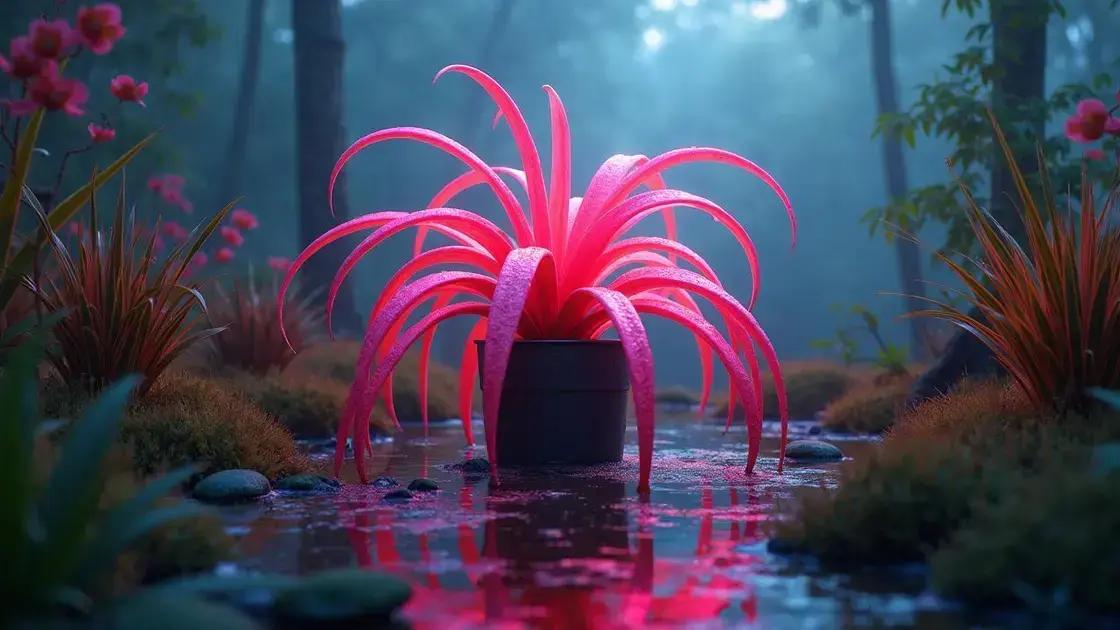How to Care for My Spider Plant: 5 Essential Tips for Thriving Growth
How to care for my spider plant is a question many people ask as they venture into the fascinating world of indoor gardening. With vibrant green foliage and air-purifying qualities, this plant can be a delightful addition to your home. Uncover the secrets behind successfully nurturing these resilient plants, including their light preferences and watering needs that will keep them thriving.
Table of Contents
ToggleUnderstanding the best light conditions for spider plants
Understanding the best light conditions for spider plants is essential for ensuring their vibrant growth and maintaining healthy foliage. Spider plants thrive in bright, indirect sunlight, but they can also adapt to lower light conditions. Here we will explore various light requirements and how they impact the health of your spider plant.
Optimal light for spider plants
Spider plants prefer bright, indirect light. Direct sunlight can scorch their leaves, while inadequate light can hinder their growth. Here are the key points to consider:
- Bright, indirect lighting is ideal for optimal growth.
- Filtered light through sheer curtains can work well.
- Spider plants can tolerate low light but may grow slower.
Signs of too much or too little light
Observing your spider plant can provide insight into its light needs. Watch for these vital signs:
- Too much light: Brown tips or scorched leaves.
- Too little light: Leggy growth or faded leaf color.
Best placement for spider plants
Placement is crucial in meeting the light requirements for spider plants. Here are some recommendations:
- Place near a window with filtered sunlight.
- Avoid facing a south window without protection from direct rays.
- Use grow lights if natural light is limited.
By ensuring your spider plant receives the right amount of light, you can foster an environment that promotes healthy growth and vibrant leaves. Consider checking out exploring indoor gardening techniques for further insights on caring for houseplants.
Watering techniques for healthy spider plant growth

Watering techniques for healthy spider plant growth are crucial to keeping your plant vibrant and thriving. Proper watering ensures that your spider plant receives the moisture it needs without becoming waterlogged. This section will cover essential watering methods and tips to promote optimal growth.
Understanding spider plant watering needs
Spider plants require a careful balance when it comes to watering. Here are key points to keep in mind:
- Allow the top inch of soil to dry out between waterings.
- Use room temperature water when watering.
- Avoid overwatering, which can lead to root rot.
Best watering practices
Implementing the right watering practices can significantly impact the health of your spider plant. Follow these steps:
- Check the soil moisture with your finger before watering.
- Water thoroughly until draining from the bottom of the pot.
- Adjust the frequency based on the season (more in summer, less in winter).
By adhering to these expert watering techniques for your spider plant, you can foster strong growth and lush foliage. If you want to learn more about proper plant care, consider exploring indoor gardening techniques for additional guidance.
Common pests and diseases affecting spider plants
Common pests and diseases affecting spider plants can pose a significant threat to their health and growth. Identifying these issues early can help you take action before they become severe. This section will discuss the most prevalent pests and diseases that can affect your spider plant.
Identifying common spider plant pests
Several pests are known to target spider plants. Here are some that you should watch for:
- Spider mites: Tiny, spider-like creatures that cause yellowing leaves.
- Mealybugs: White, cottony pests that can cluster on leaves.
- Scale insects: Hard, protective shells that can weaken the plant.
Symptoms of pest infestation
Knowing the signs of distress can help in quick identification:
- Wilting or yellow leaves.
- Sticky residue on leaves (honeydew from bugs).
- Visible insects on the plant.
Dealing with spider plant diseases
Besides pests, spider plants can also be affected by diseases, which may include:
- Root rot: Caused by overwatering and poor drainage.
- Leaf spot disease: Characterized by dark spots due to fungal infections.
- Powdery mildew: White powdery substance on leaves caused by humidity.
To keep your spider plant healthy, take preventive measures such as proper watering and maintaining airflow around the plant. For further information and techniques, consider exploring indoor gardening techniques.
In conclusion
Caring for your spider plant requires attention to several crucial factors, including the right light conditions, proper watering techniques, and management of common pests and diseases. By implementing these strategies, you can ensure your spider plant grows healthy and vibrant. Regularly monitoring your plant and adjusting care as needed will contribute to its longevity. For additional insights and tips on enhancing your indoor garden, explore resources that focus on plant care excellence.

